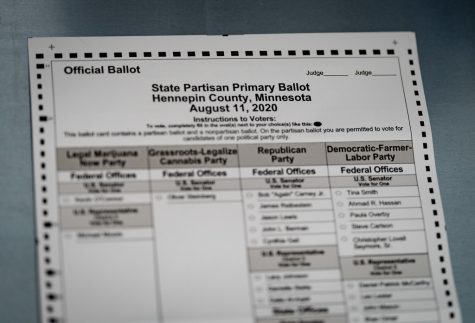Rent Stabilization Measure to be Voted on in St. Paul
October 13, 2021
This fall voters in St. Paul will decide on a rent stabilization ordinance to be introduced.
Rent policies have been a topic of discussion among economists for a long time. On the surface level, rent policies look like a great idea, but the underlying effects have often become a topic of discussion with politicians and renters. Economists believe rent control and stabilization are usually a bad idea because they think markets are most efficient when the supply and demand find an equilibrium naturally.
This movement for voters to be able to vote on rent stabilization comes after Housing Equity Now St. Paul (HENS) garnered over 9,000 signatures.
The exact language of question 1 on the ballot is as follows:
Should the City adopt the proposed Ordinance limiting rent increases? The Ordinance limits residential rent increases to no more than 3% in a 12-month period, regardless of whether there is a change of occupancy. The Ordinance also directs the City to create a process for landlords to request an exception to the 3% limit based on the right to a reasonable return on investment. A “yes” vote is a vote in favor of limiting rent increases. A “no” vote is a vote against limiting rent increases.
Sample ballots can be found on the Minnesota Secretary of State Webpage.
Proponents for voting yes to this ordinance cite that people deserve to have a secure living situation. According to the Housing Equity Now St. Paul website, “Rent stabilization is a proven policy that protects tenants from unreasonable rent spikes, accounts for the operating expenses of landlords, and is cost-effective for our city and taxpayers. Now is the time to join together — across race and residence — to rewrite the rules so that they are fair and just.”
On the HENS webpage, there are many stories of why people support voting yes on the ballot measure. Stories include landlords who say they stay below 3% rent increase each year while still keeping up with regular maintenance and upgrades. Others say the measure would move St. Paul in the direction of being the “most livable city”.
Opponents of the ordinance are taking a different approach. Many believe that this ordinance is unproven and untested in St. Paul. On the “Think Twice About Rent Control” website, they cite that cities like New York and San Francisco that have implemented similar rent control procedures.
The main argument against the ordinance is the uncertainty of rent control where it has not been tested. Think Twice About Rent Control says, “No one knows how much the measure will cost or how it will be enforced. This rent control measure covers every rental unit and every renter without any exceptions. This approach has never been tried before. No one knows the long-term impact on housing quality or affordability.” Think Twice About Rent Control believes there is uncertainty because of the difference in the measure compared to previous ordinances in different states. They state, “Unlike measures in other American cities, City Question 1 covers every rental unit in St. Paul and every renter.” With this rent stabilization being unseen in other cities it leaves many questions about the future of renting in St. Paul.

The overall opposition to the rent stabilization belief would lead to three possible outcomes. First, they believe maintenance and general upkeep of properties will decrease the 3% increase does not follow the cost of inflation over the next years. Also, objectors believe the rent stabilization will eventually create an even bigger shortage in the long term.
In Minneapolis, similar measures are being considered to be voted on in the future as well. In a Rent Stabilization Report done by the University of Minnesota, Minneapolis had an average of 2.0% increase in rent from 2000-2007 (pre-crash), 0.3% increase in 2008-2012 (Crash), and 2.7% increase in 2013-2018. These statistics can be analyzed to find the affordability of rent and determine if measures need to be taken.
On November 2 voters will ultimately be the deciding factor of whether this measure comes into effect. For good or bad residents of St. Paul will decide what is best for their city and residents.












